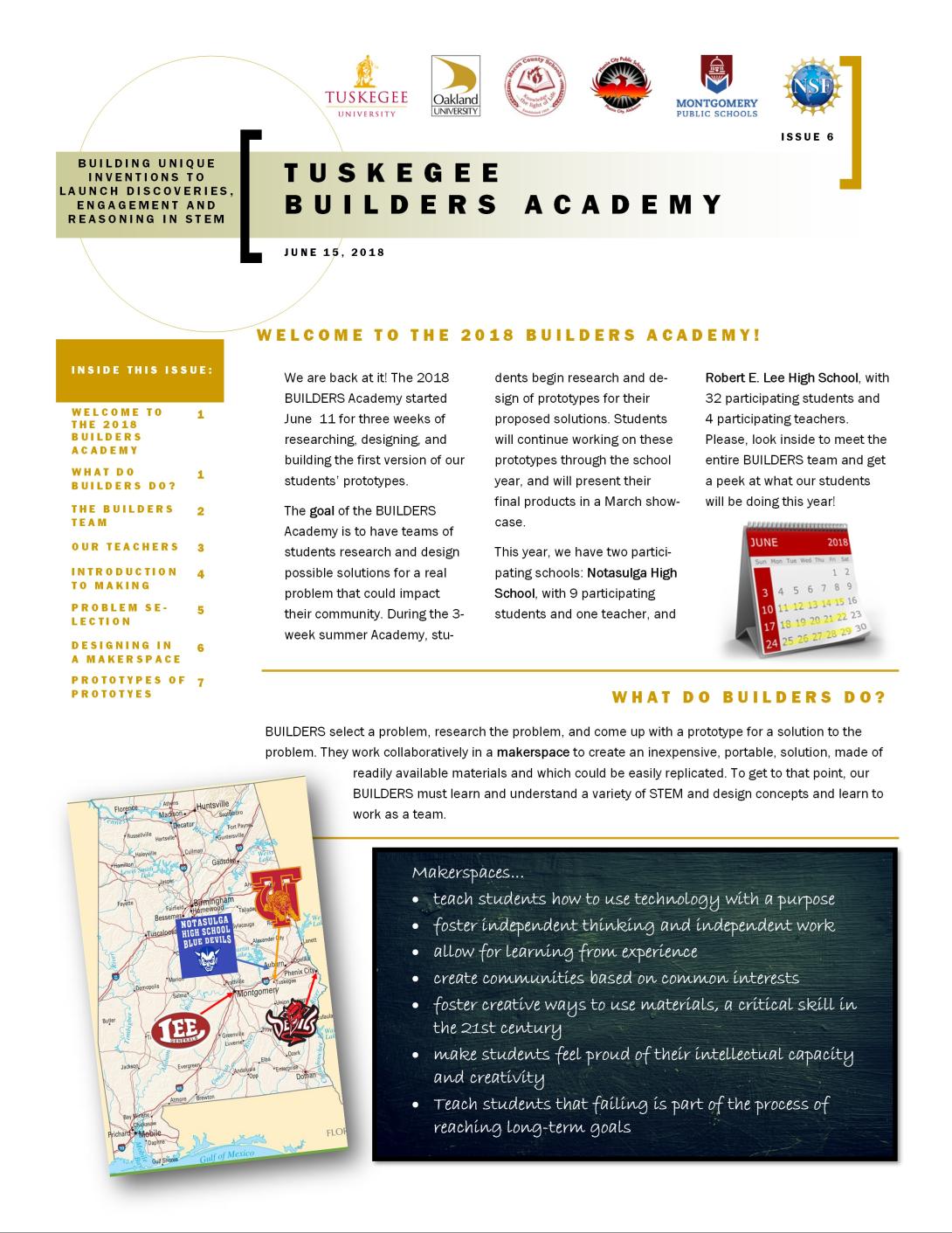BUILDERS Academy Newsletter (Issue 6)
Publication
Newsletter highlighting the activities of the first week of the 2018 BUILDERS Academy.

Newsletter highlighting the activities of the first week of the 2018 BUILDERS Academy.
In this chapter, I discuss the development, piloting and revision of a new instrument for measuring pre/post the academic self-efficacy of students. The initial motivation for the creation of this new instrument came from an unsuccessful search for an instrument to measure self-efficacy in an NSF-funded project designed to investigate the motivational effects of a multi-user virtual environment (MUVE) on the science achievement of middle-school students. However, individual sections of the new instrument can contribute in general to the more-finely discriminated measurement of self-efficacy
The Upper Elementary (4-5th) and the Middle and High School (6-12th) Student Attitudes toward STEM Surveys (S-STEM) each contain four scales (sets of surveys items that most confidently describe a single characteristic of the survey-taker when the responses to these items are calculated as a single result). The first five scales consists of Likert-scale questions which ask the respondent about their confidence and attitudes toward math, science, engineering and technology, and 21st century learning respectively. Final items in the surveys ask students about their attitudes toward 12 different
This study examines an out-of-school time program targeting elementary-aged youth from populations that are typically underrepresented in science fields (primarily African-American, Hispanic, and/or English Language Learner participants). The program aimed to foster positive attitudes toward science among youth by engaging them in growing plants hydroponically (in water without soil). Participants’ attitudes toward science, including anxiety, desire, and self-concept, were examined through pre-post survey data (n = 234) over the course of an afterschool program at three separate sites. Data
From 2006 to 2012, Florida Statute §1003.4156 required middle school students to complete electronic personal education planners (ePEPs) before promotion to ninth grade. The ePEP helped them identify programs of study and required high school coursework to accomplish their postsecondary education and career goals. During the same period Florida required completion of the ePEP, Florida’s Career and Professional Education Act stimulated a rapid increase in the number of statewide high school career academies. Students with interests in STEM careers created STEM-focused ePEPs and may have
In this article, we offer a glimpse into how science centers and afterschool programs are working together, along with valuable advice from seasoned institutions that can help you establish your own partnership.
Field experiences provide an important opportunity for preservice teachers to observe and practice science instruction. Too often, insufficient time is allotted for elementary science instruction in the formal classroom. This paper outlines the opportunities and lessons learned from an after school field experience where preservice elementary teachers worked in two-person teams with a classroom mentor teacher at local elementary schools and community centers to deliver two science lessons per week during an elementary science methods course. Multiple evidences of success are presented at the
Desktop manufacturing systems such as 3D printers and computer-controlled die cutters have recently become affordable in schools. Because this technology is evolving rapidly, considerable experimentation is occurring as teachers explore opportunities to enhance learning across a range of content areas. Central coordination and planning can facilitate effective use of digital manufacturing technologies in schools. Factors that should be considered include acquisition of technology, placement, and support of the technology, safety, alignment with educational standards and learning objectives
This entry describes technologies that support engineering education, such as 3D printing, computer-assisted design, electromechanical systems and instrumentation, and control systems. Engineering education is one of four disciplines within STEM (science, technology, engineering, and mathematics) education. While science and mathematics are commonly regarded as core subjects in schools, engineering has had a less prominent role in K–12 education. However, engineering is increasingly used to teach science in context. This can increase students’ depth of understanding, allowing them to apply
This paper describes the design and evaluation of a one-week App Inventor summer camp for middle school students with an explicit focus on addressing local community needs. The community focus of the camp was designed to appeal to a broad range of students. We conducted an in-depth interview study to examine its impact on students' attitudes and perceptions, and supplemented this with results from project evaluation. Our results indicate that students had positive experiences in learning and creating real apps for solving community problems. Focusing on local community needs can also help to